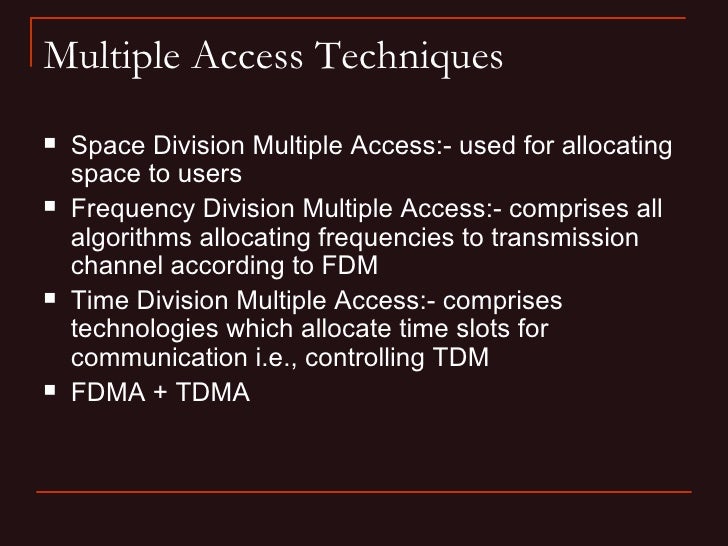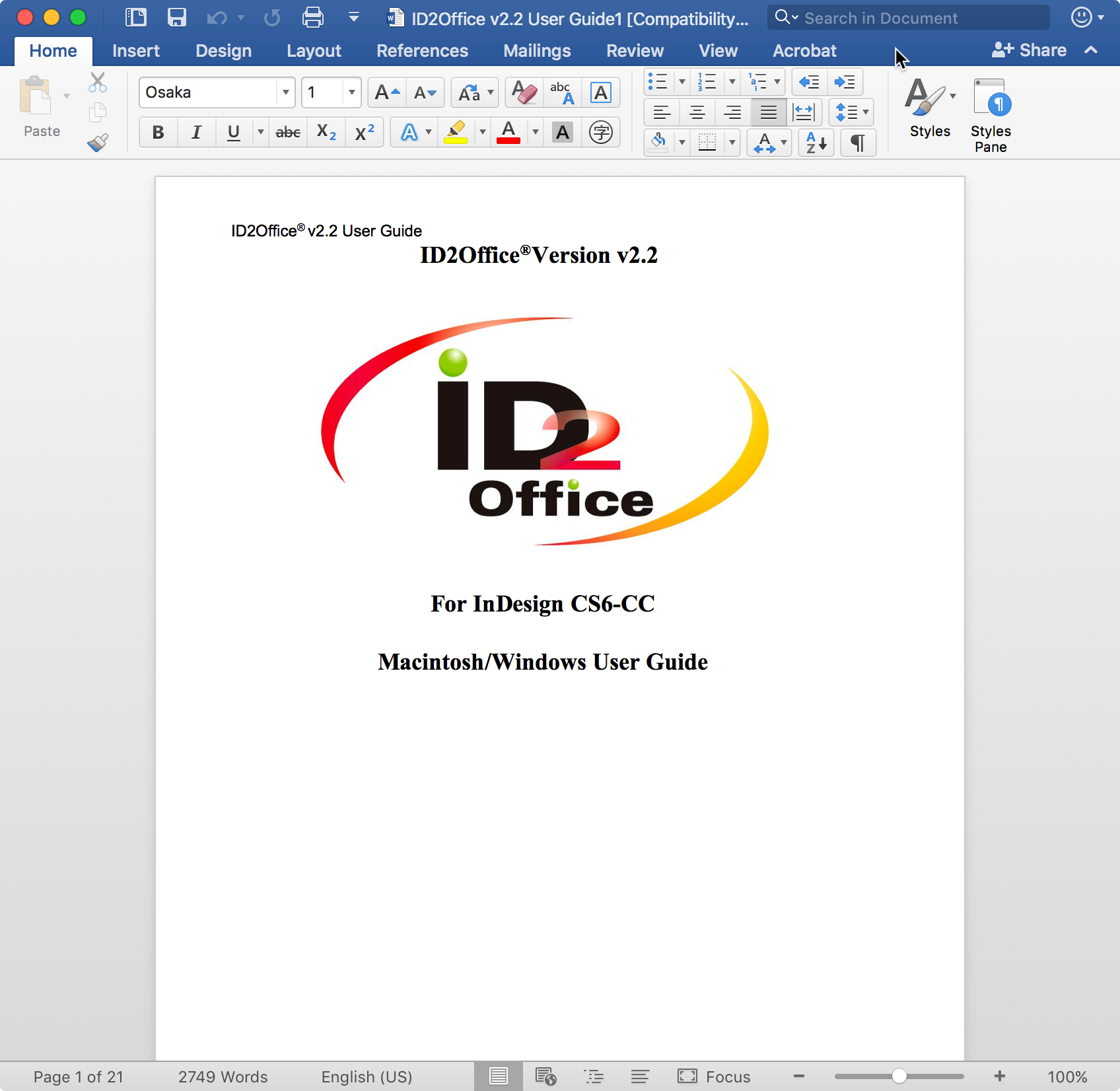
Spatial Division Multiplexing


Kelvin Hilton k.c.hilton@staffs.ac.uk 2nd Generation Mobile Telecommunications Part 2 2nd Generation Mobile Telecommunications kch/soc/mccs/04 pageCopyright: All rights reserved. Not to be reproduced without consent.2 TDMA vs CDMA Recall two main competitors in the 2G space were TDMA & CDMA The major difference between the new 2G technologies was the access scheme 1G had used FDMA Initially all 2G technologies were TDMA (before arrival of CDMA) 2nd Generation Mobile Telecommunications kch/soc/mccs/04 pageCopyright: All rights reserved. Not to be reproduced without consent.3 Review on sharing a medium Time division multiplexing brought digital technology to mobile communications Recall, “multiplexing describes how several users can share the same medium with minimum or no interference” Schiller 2003 In mobile communications multiplexing can be applied in 4 dimensions Space Frequency Time Code 2nd Generation Mobile Telecommunications kch/soc/mccs/04 pageCopyright: All rights reserved. Not to be reproduced without consent.4 Space Division Multiplexing (SDM) Premise that if we have entities wishing to communicate using a single channel, then as long as we space them far enough apart interference will not occur To reduce further, the risk of interference place guard space between the frequency spaces 2nd Generation Mobile Telecommunications kch/soc/mccs/04 pageCopyright: All rights reserved. Not to be reproduced without consent.5 Frequency Division Multiplexing (FDM) Divides the available frequency into non- overlapping bands with guard spaces between to avoid overlapping (adjacent channel interference) Receiver only has to know the frequency to tune in to Used in analogue systems 2nd Generation Mobile Telecommunications kch/soc/mccs/04 pageCopyright: All rights reserved. Not to be reproduced without consent.6 Time Division Multiplexing (TDM) Allows access to entire frequency bandwidth but for a limited amount of time All senders use same frequency in at different time If two transmissions overlap known as co- channel interference Precise clock synchronisation required 2nd Generation Mobile Telecommunications kch/soc/mccs/04 pageCopyright: All rights reserved. Not to be reproduced without consent.7 Combining FDM/TDM By allowing a channel to use a certain frequency for a certain period of time more efficient use of resource is achieved More robust against interference and tapping This is the scheme used by GSM between the handset and base station 2nd Generation Mobile Telecommunications kch/soc/mccs/04 pageCopyright: All rights reserved.
Not to be reproduced without consent.8 Combining FDM/TDM Requires coordination between the different senders Two senders will interfere if they select the same frequency To avoid this the senders hop between frequencies, if the hop is fast enough the period of interference may be so small that if the coding of the data signal is sufficient to allow the receiver to recover the data the interference is deemed acceptable 2nd Generation Mobile Telecommunications kch/soc/mccs/04 pageCopyright: All rights reserved. Not to be reproduced without consent.9 Code Division Multiplexing (CDM) All channels use the same frequency, however, each channel is given its own unique code Each code must be sufficiently orthogonal to allow appropriate guard spaces Large range of codes provides significant expansion, security, etc 2nd Generation Mobile Telecommunications kch/soc/mccs/04 pageCopyright: All rights reserved. Not to be reproduced without consent.10 Code Division Multiplexing (CDM) Highly complex scheme Receiver has to know the code & be able to separate out other traffic on different codes which appear as background noise Receiver & transmitter must be synchronised to provide correct decoding All signals must reach the receiver with relatively equal strength or the receiver will not be able to distinguish between them 2nd Generation Mobile Telecommunications kch/soc/mccs/04 pageCopyright: All rights reserved. Not to be reproduced without consent.11 Medium Access Control (MAC) Whilst SDM, FDM, TDM, CDM describe how the medium is accessed at the physical layer, how the selected multiplexing scheme is “regulated” is called the Medium Access scheme (equivalent to OSI Layer 2 the Data Link Layer) In mobile this layer is divided between the Logical Link Control (2b) and the MAC (2a) 2nd Generation Mobile Telecommunications kch/soc/mccs/04 pageCopyright: All rights reserved. Not to be reproduced without consent.12 Medium Access Control (MAC) Why can we not simply use proven data MAC’s such ac CSMA/CD used on ethernet? On a fixed wire, the propagation etc, is a known factor, the sender is responsible for detecting collisions, etc.
If collision occurs everyone using the medium will be aware In wireless networks attenuation, etc means signal decreases as it propagates out from the transmitter, therefore a collision may occur but will not be detected by the sender 2nd Generation Mobile Telecommunications kch/soc/mccs/04 pageCopyright: All rights reserved. Not to be reproduced without consent.13 Problem of Hidden Terminals Consider three adjacent mobile phones Signal from A reaches B but not C Signal from C reaches B but not A B reaches both A and C Both A and C want to transmit to B 2nd Generation Mobile Telecommunications kch/soc/mccs/04 pageCopyright: All rights reserved. Not to be reproduced without consent.14 Problem of Hidden Terminals A senses the medium, it’s clear so it starts transmission C senses the medium and as it cannot see A as far as C is concerned the medium is available Result is collision at B Neither A or C will detect the collision because b is hidden from C and vice versa 2nd Generation Mobile Telecommunications kch/soc/mccs/04 pageCopyright: All rights reserved. Not to be reproduced without consent.15 Problem of Exposed Terminals As before, consider three adjacent mobile phones Signal from A reaches B but not C Signal from C reaches B but not A B reaches both A and C Suppose B wants to transmit to A and C wants to transmit to anywhere else 2nd Generation Mobile Telecommunications kch/soc/mccs/04 pageCopyright: All rights reserved. Not to be reproduced without consent.16 Problem of Exposed Terminals C will sense the medium is busy and so will postpone transmission However, because anything C does with any other mobile has no impact A delay is not necessary Even if there are collisions at B due to C sending it will not matter because B is sending not receiving and thus A is not effected Therefore we can say that C is exposed to B 2nd Generation Mobile Telecommunications kch/soc/mccs/04 pageCopyright: All rights reserved. Not to be reproduced without consent.17 Problem of Near/Far Terminals Proximity to a transmitter can also cause problems Because of reduction in signal strength over distance, even though C should be able to receive A’s transmissions, B’s signal is much stronger and will drown out A’s This is called the near/far effect and is particularly a problem on CDM 2nd Generation Mobile Telecommunications kch/soc/mccs/04 pageCopyright: All rights reserved.
Definition Of Multiplexing
Not to be reproduced without consent.18 The role of the Access Scheme Clearly conventional digital access schemes cannot be transferred to mobile Each access scheme has its own solution Mobile networks use a combination of the schemes to overcome the problems 2nd Generation Mobile Telecommunications kch/soc/mccs/04 pageCopyright: All rights reserved. Not to be reproduced without consent.19 Space Division Multiple Access (SDMA) Allocates separate space to users of the network For example allocating the optimal base station to the mobile phone The mobile phone may receive signals from several base stations with its range The SDMA MAC algorithm decides which is best based on the FDM, TDM or CDM available Basis for SDMA is formed by the cells and antennas of the appropriate infrastructure 2nd Generation Mobile Telecommunications kch/soc/mccs/04 pageCopyright: All rights reserved. Not to be reproduced without consent.20 Frequency Division Multiple Access (FDMA) Allocation may be fixed or dynamic Can allocate the same frequencies or select a pattern from those available (eg where FDMA is combined with TDMA) using a hopping pattern FDM is often used for full-duplex communication between a base station and a mobile phone The two channels of the duplex are separated by frequency (called frequency division duplex) 2nd Generation Mobile Telecommunications kch/soc/mccs/04 pageCopyright: All rights reserved.